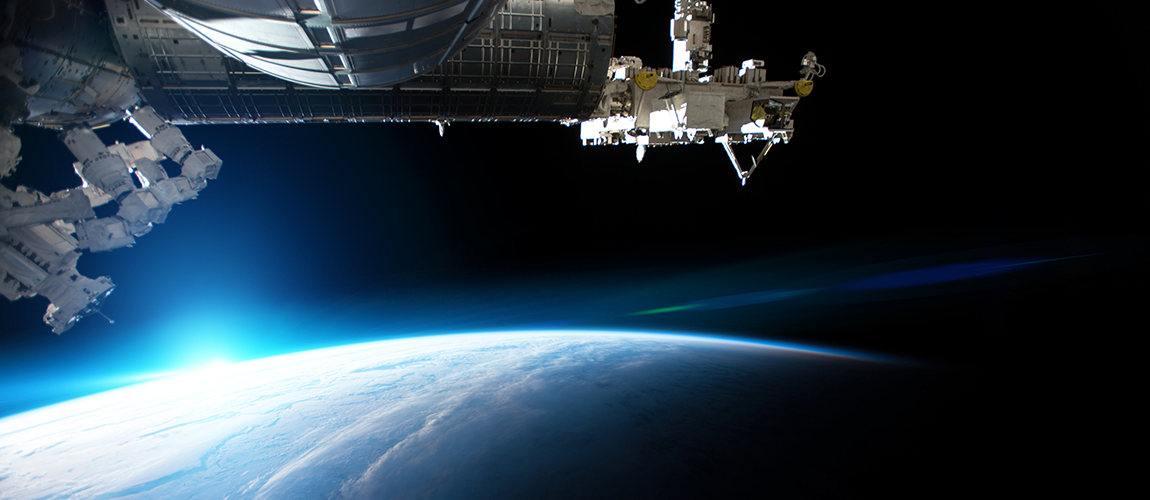Earth Observation

The TILBA® line enables reliable laser communication, making it possible to receive Earth Observation data at very high throughput rates
Satellite Earth Observation (EO) plays a crutial role in our society, providing us with valuable information about our planet and human activities. In the current state of things, EO faces some challenges, such as saturation of radio frequency communication channels, which limits the exploitation of the collected data. However, optical communication are emerging as a reliable solution that circumvents the current limits.
Earth Observation involves collecting data and images from satellites orbiting the Earth, by monitoring the Earth’s surface and atmosphere. Remote sensing can be done passively, using technologies such as, thermal and hyperspectral imagery, or actively, using technologies such as RADAR or LiDAR. These technologies require specialized instruments and sensors to capture data in different wavelengths of the electromagnetic spectrum, such as visible light, infrared and microwave radiation. The collected data are then sent to a ground station, where it is processed and analyzed using advanced calculation and modeling tools.
The processed information supports decision-making on a wide range of environmental and societal issues. This practice has become an essential tool for scientists, policymakers, and the private sector, so that today a wide variety of satellites are in orbit, operated by various government agencies, military corps, private companies and New Space players. According to PwC, the value of the global Earth Observation market was estimated at 7 billion EUR in 2015, with a CAGR of 15% for Earth Observation-related services between 2014 and 2019.(1)
Earth Observation applications include:
Environmental monitoring: EO can be used to monitor the state of our environment, it’s climate trends as well as weather conditions to provide weather forecasts which enables to anticipate and provide early warning of natural disasters. In the event of a disaster, real-time monitoring of the affected area allows for more efficient management of the search and rescue operations.
Human activities: EO is also used to support a range of human activities, such as agriculture, water management and land use. It also allows the authorities to conduct air and water quality control, maintain maritime surveillance and combat deforestation and forest fires.
National security and defense: EO data has become an increasingly critical tool for national security and defense purposes. A military observation satellite can provide information for a range of applications such as intelligence gathering, surveillance, reconnaissance, and infrastructure protection. With real-time updates on activities in urban areas, EO data helps to identify potential security threats and enable proactive responses.
As the number of active satellites in orbit continues to grow, reaching almost 5,500 in 2022 according to the UCS Satellite Database(2) with approximately 1,400 Earth Observation satellites orbiting the earth according to the European Space Agency (ESA)(3), the need for two-way links between satellites and the ground has increased proportionately. Communication reliability and throughput are therefore becoming increasingly critical, especially for Earth Observation, which generates a large amount of data and images that need to be sent to Earth via direct-to-earth links. This is the main limitation of EO: most of the data remains stuck in space.
Radio frequencies (RF) – the current standard for space-to-ground communications – are reaching capacity and can no longer meet the growing needs of space programs. One main limitation is the congestion of RF communication channels, which require a license to avoid inter-channel interference. Obtaining a license involves significant expense and wait times. The C, KA and Ku bands are the most commonly used RF channels, while the X and L bands are primarily reserved for military and research applications. Furthermore, RF communications provide limited throughput and security: the effective bandwidth is a few hundred Mb/s and reaches full capacity at just a few Gb/s.
Free-space laser communication are emerging as a reliable communications solution capable of meeting the growing needs for high-throughput, robust and secure networks. Laser communication can provide ground-to-ground, space-to-ground, or space-to-space links. The technology relies on the propagation of light in vacuum and air to exchange information. Faster, safer, more compact and easier to deploy than current technologies, these links do not need a dedicated frequency band. For instance, an RF link would take nine years to download a very high-resolution image of Mars, while the same download would only take nine weeks with laser communication. Lasercoms also have the advantage of being compatible with ultra-high-capacity terrestrial telecom technologies (up to several Tbit/s), thus benefiting from the technological maturity of the telecom industry.
On Earth, laser communications are limited by atmospheric turbulence. Disturbances caused by the heterogeneity and constant movement of air can affect the phase and intensity of the light beam, degrading the quality of the link as it enters the Earth’s atmosphere. However, some solutions exist to compensate for atmospheric turbulence.
Cailabs has developed a turnkey optical ground station based on its Multi-Plane Light Conversion (MPLC) technology, which compensates for atmospheric turbulence. The TILBA®-OGS ground station enables the reception of your observation data intact and at hight-throughput rates thanks to:
- Optical communication at 10 Gbps and above, compliant with CCSDS and SDA standards
- TILBA-ATMO and TILBA-IBC technological building blocks embedded in the station enables increased range and robustness of laser communication in atmospheric turbulence
- Remotely operable and compatible with multiple missions
The French Ministry of the Armed Forces, the AID (Agence de l’Innovation de Défense), the DGA (Direction Générale des Armées), the SSC (Swedish Space Corporation) as well as the company CONTEC trust and rely on Cailabs’ OGS.
References
Questions about TILBA solutions?
Contact us!




